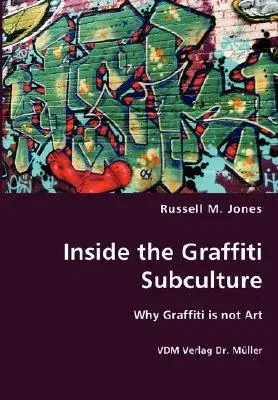Russell M Jones
(Author)Inside the Graffiti SubculturePaperback, 28 November 2007

Qty
1
Turbo
Ships in 2 - 3 days
In Stock
Free Delivery
Cash on Delivery
15 Days
Free Returns
Secure Checkout
Print Length
84 pages
Language
English
Publisher
VDM Verlag Dr. Mueller E.K.
Date Published
28 Nov 2007
ISBN-10
3836436639
ISBN-13
9783836436632
Description
Product Details
Author:
Book Format:
Paperback
Country of Origin:
US
Date Published:
28 November 2007
Dimensions:
24.41 x
16.99 x
0.43 cm
Genre:
Urban
ISBN-10:
3836436639
ISBN-13:
9783836436632
Language:
English
Location:
Saarbrucken
Pages:
84
Publisher:
Weight:
149.69 gm

